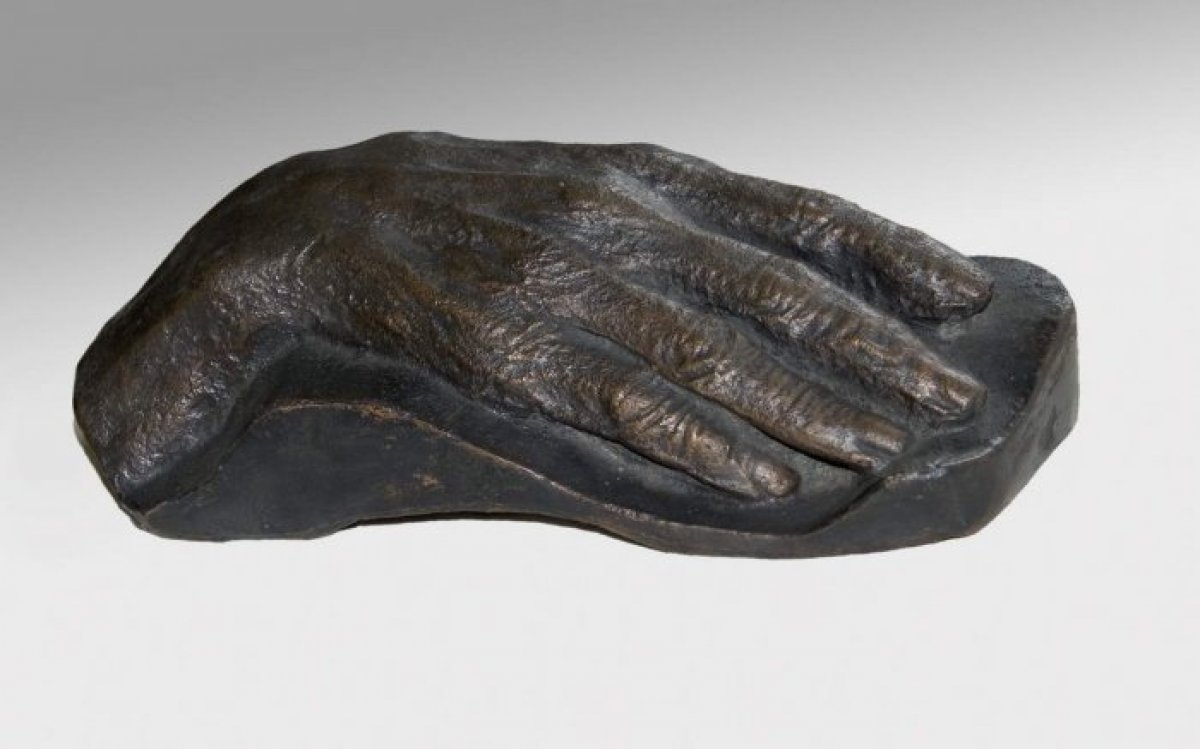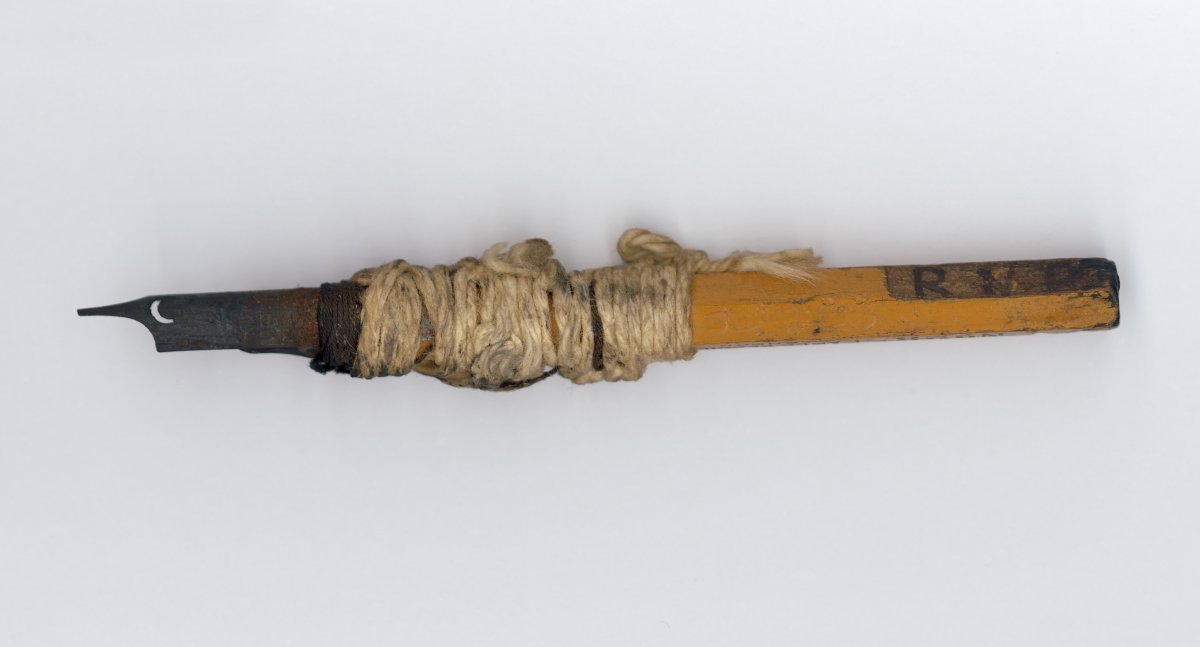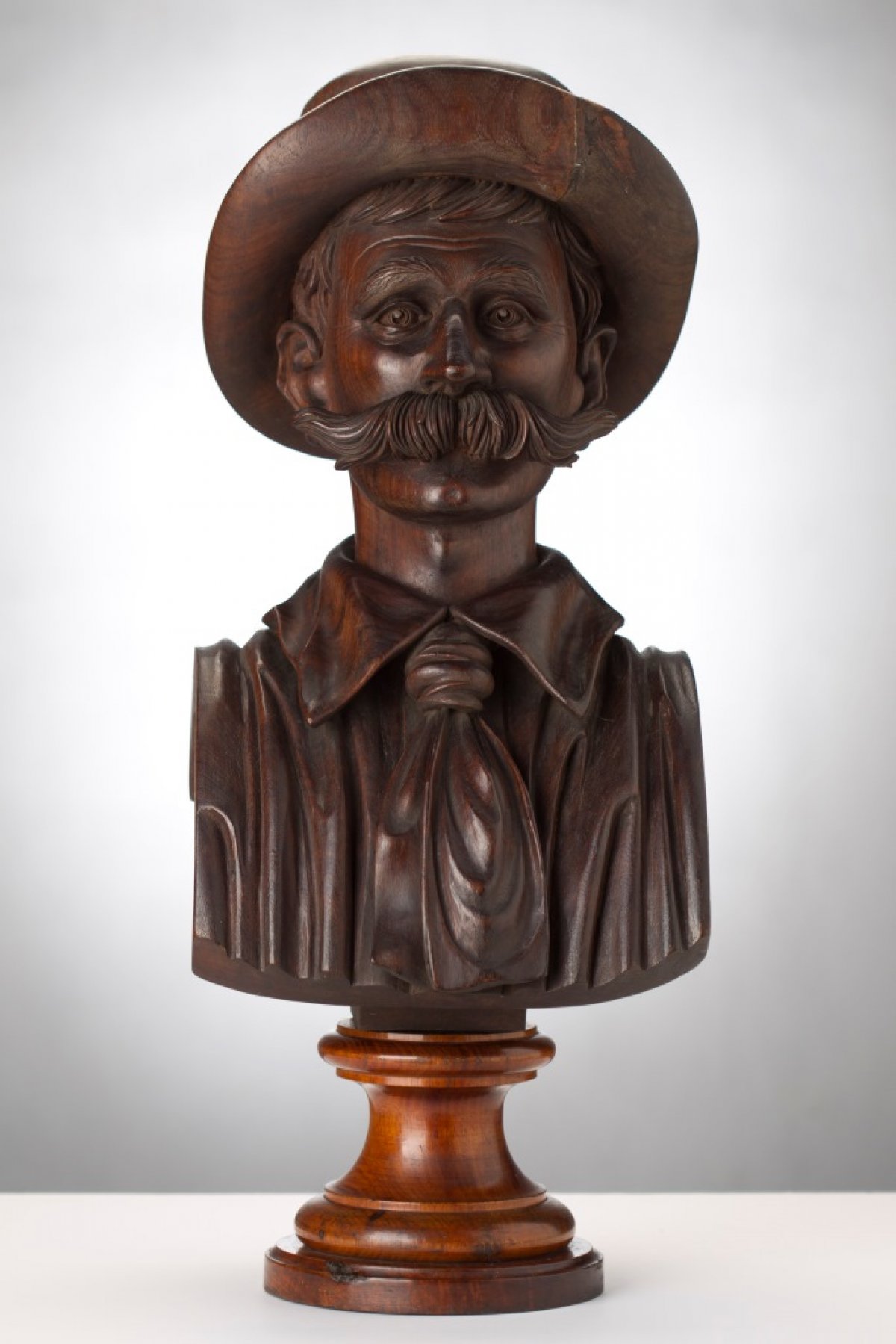Henry Lawson is celebrated as one of Australia’s greatest poets. The National Library of Australia’s collection of Henry Lawson realia helps contemporary Australians understand Lawson’s popularity in the late nineteenth and early twentieth centuries. He often wrote about the lives of ordinary Australians, especially those living in the bush, and he was sometimes dubbed ‘the people’s poet’. Each of the Library’s Lawson objects reveals an aspect of the man and the complexity of his character. Objects include a bronze cast of Lawson’s hand, his bush pen, his fob watch, and a bust carved by Otto Bettmann (1862–1945).
Prime Minister William (Billy) Hughes (1862–1952) called Henry Lawson ‘the poet of Australia, the minstrel of the people’. The style of literature that Lawson wrote was popular because, at the time of writing, people were beginning to think about what it meant to be Australian and there was growing support for a federation of the colonies. The local newspapers and magazines that published Lawson’s writing reflected this wish for a strong Australian identity. Lawson’s poetry and prose has influenced the way Australians see themselves and it provides an insight into the emergent Australian nation around the time of Federation.
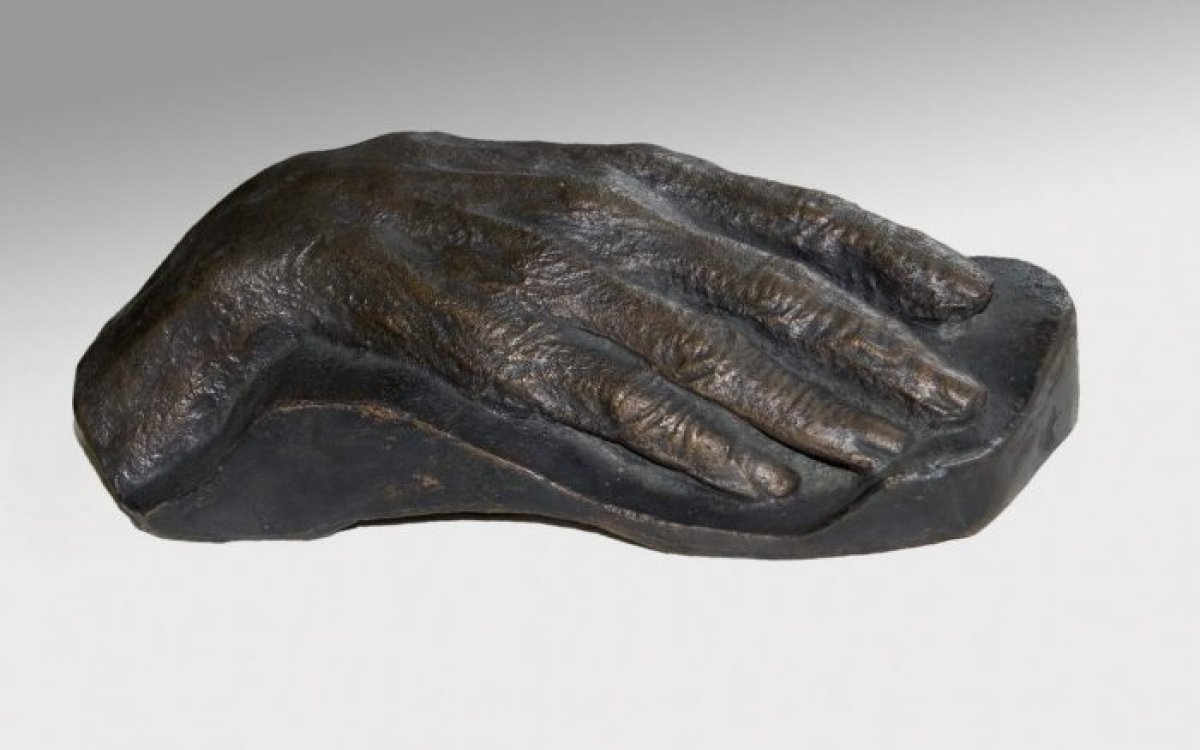
Illingworth, Nelson, 1862-1926. (1922). Cast of Henry Lawson's hand, ca. 1922 [realia] / Nelson Illingworth. http://nla.gov.au/nla.obj-139632985
1. Show students the image of the cast Lawson’s hand without a caption. Use the following questions to interrogate the object:
- What do you think this object is made of?
- Why would someone have a cast made of their hand?
- What does the cast tell us about the person?
2. Continue your study of Lawson by introducing students to two other objects from the National Library of Australia’s collection that celebrate the poet—Lawson’s pen and the bust made by Otto Bettmann (1862–1945). Challenge students to consider what the objects tell them about Lawson. As a class, list the ways a person’s image could be recorded before the common use of photography. Ask students to create a bust of a friend or relative from modelling clay, papier mâché or plasticine. Alternatively, they could investigate how to make a plaster cast of a hand and, using this information, make a cast of their own hand.
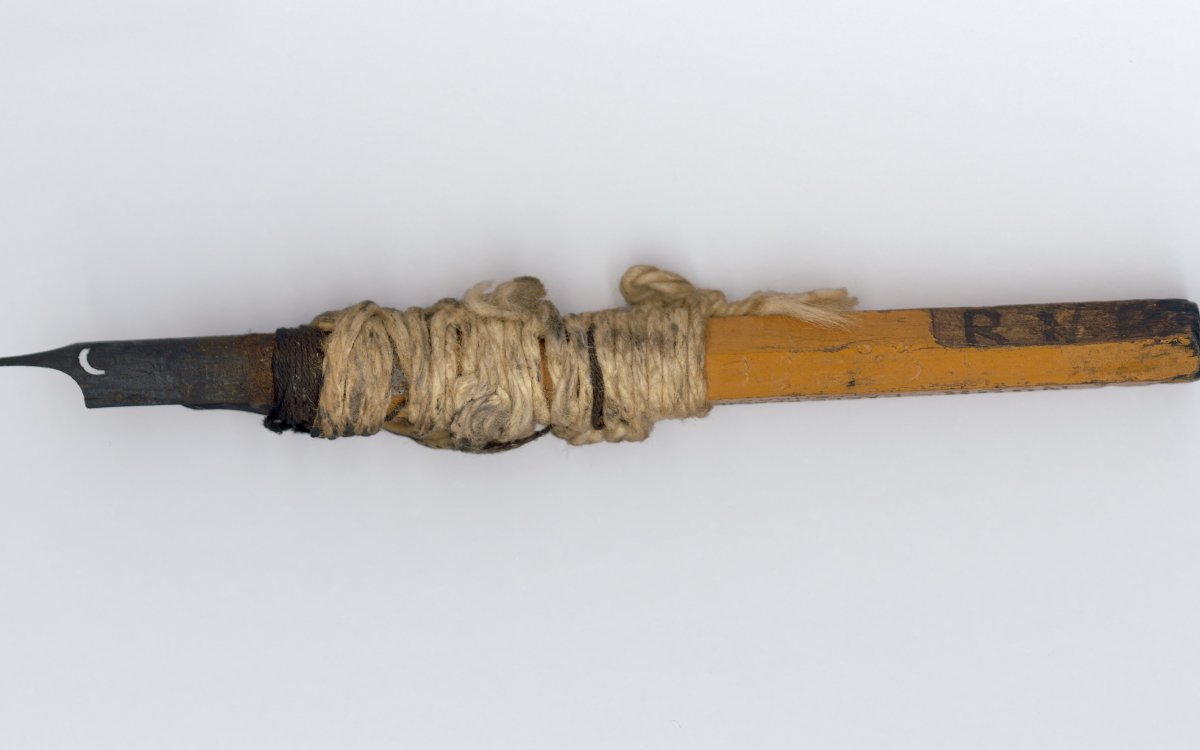
(1904). [Pen used by Henry Lawson at Leeton, N.S.W.] [realia]. http://nla.gov.au/nla.obj-146219262
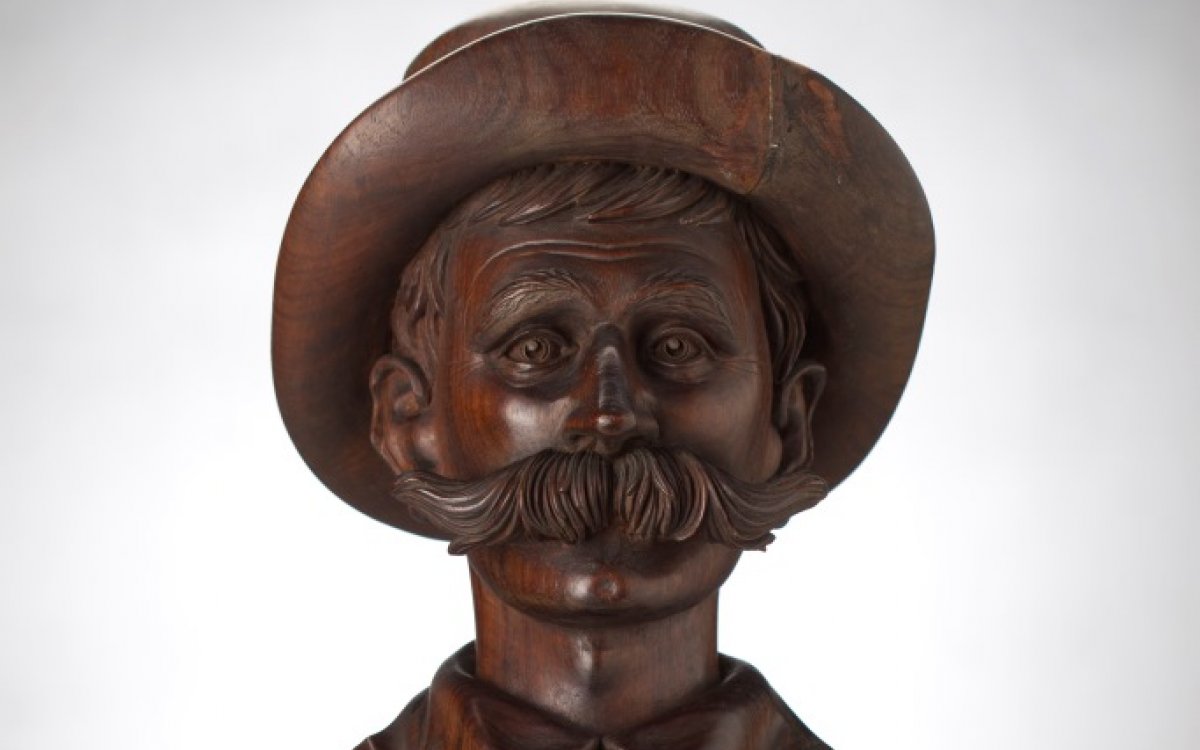
Bettmann, Otto, 1862-1945. (1900). Bust of Henry Lawson [realia] / Otto Bettmann. http://nla.gov.au/nla.obj-139631161
3. Lawson’s first published poem, ‘A Song of the Republic’, appeared in The Bulletin in 1887. It captures the rise of patriotism and the Australian community’s thirst for a national identity.
Share the poem, ‘A Song of the Republic’ (open Background information below)
Sons of the South, awake! arise!
Sons of the South, and do.
Banish from under your bonny skies
Those old-world errors and wrongs and lies.
Making a hell in a Paradise
That belongs to your sons and you.
Sons of the South, make choice between
(Sons of the South, choose true),
The Land of Morn and the Land of E'en,
The Old Dead Tree and the Young Tree Green,
The Land that belongs to the lord and the Queen,
And the Land that belongs to you.
Sons of the South, your time will come—
Sons of the South, 'tis near—
The ‘Signs of the Times’, in their language dumb,
Fortell it, and ominous whispers hum
Like sullen sounds of a distant drum,
In the ominous atmosphere.
Sons of the South, aroused at last!
Sons of the South are few!
But your ranks grow longer and deeper fast,
And ye shall swell to an army vast,
And free from the wrongs of the North and Past
The land that belongs to you.
Sons of the South, awake! arise!
Sons of the South, and do.
Banish from under your bonny skies
Those old-world errors and wrongs and lies.
Making a hell in a Paradise
That belongs to your sons and you.
Sons of the South, make choice between
(Sons of the South, choose true),
The Land of Morn and the Land of E'en,
The Old Dead Tree and the Young Tree Green,
The Land that belongs to the lord and the Queen,
And the Land that belongs to you.
Sons of the South, your time will come—
Sons of the South, 'tis near—
The ‘Signs of the Times’, in their language dumb,
Fortell it, and ominous whispers hum
Like sullen sounds of a distant drum,
In the ominous atmosphere.
Sons of the South, aroused at last!
Sons of the South are few!
But your ranks grow longer and deeper fast,
And ye shall swell to an army vast,
And free from the wrongs of the North and Past
The land that belongs to you.
This poem raises the idea of brotherhood among the Australian population as well as rejecting the authority of British rule. Use the following questions to explore this poem with your students in a class discussion:
- Who are the ‘Sons of the South’ to whom Lawson refers?
- What does Lawson mean when he says ‘awake! arise!’?
- What does the expression ‘making a hell in paradise’ mean? To what does this refer?
- What do you think the ‘ominous whispers’ refer to?
- Lawson says the ‘Sons of the South are few!’, but predicts their numbers will ‘swell to an army vast’. What does he mean?
- What could ‘the wrongs of the North and Past’ be?
- What images do the words ‘The land’ make you think of? Bear in mind that this poem was published in 1887.
You may wish to explore some of Lawson’s other poems and stories that depict the growing sense of a national identity in Australia. These could include ‘Waratah and Wattle’, ‘Faces in the Street’ and ‘The Song of Australia’.
4. The ideas Lawson expressed in ‘A Song of the Republic’ were considered revolutionary at the time. Invite students to write their own poem or song to capture the development of ideas that might be considered revolutionary in today’s society
Other Treasures sources that relate to the concepts explored in this source include: Documenting Federation and A national identity.
